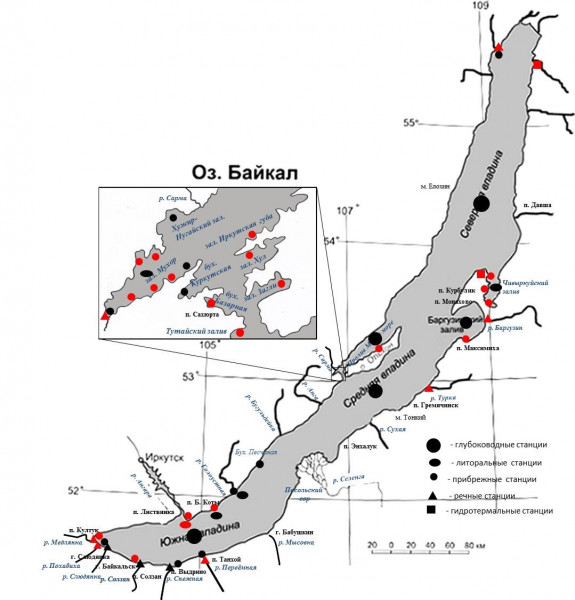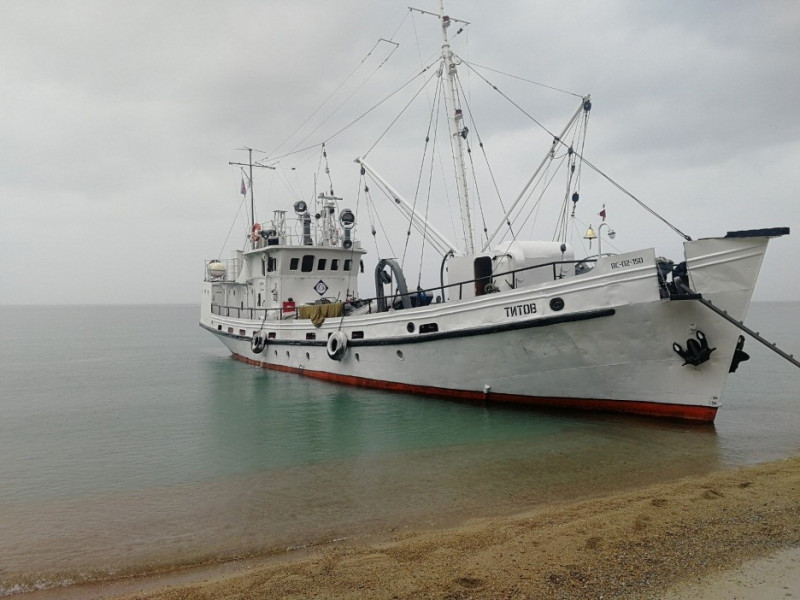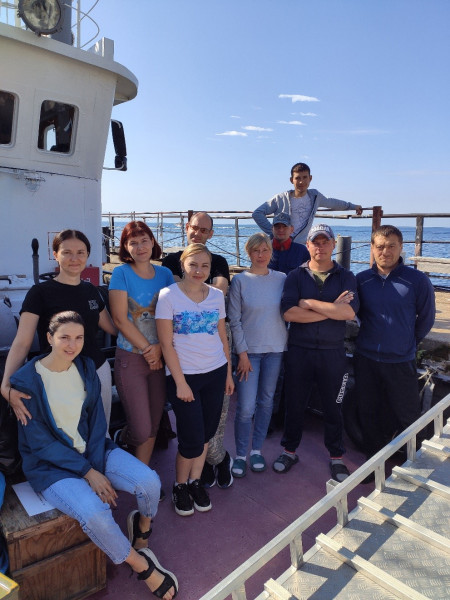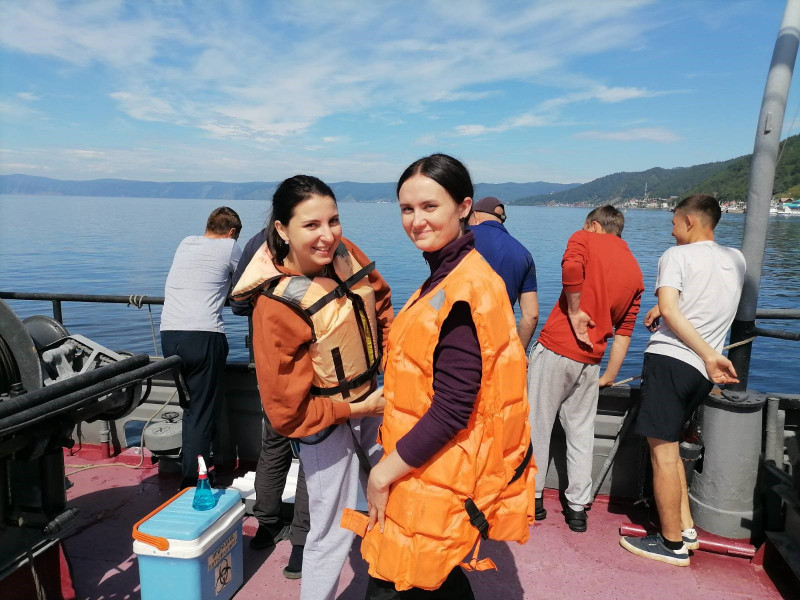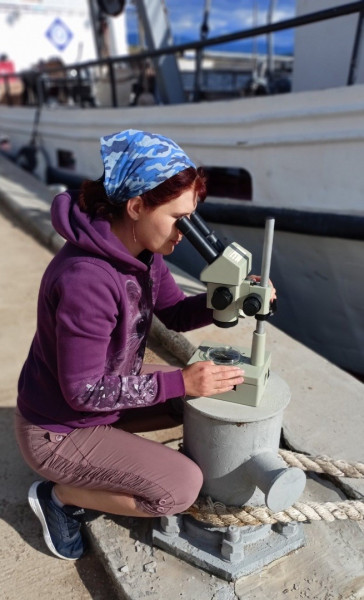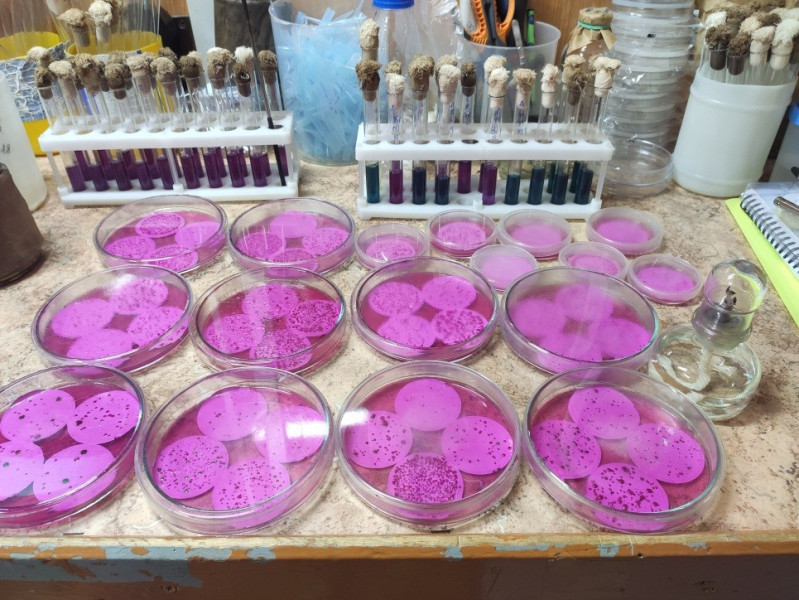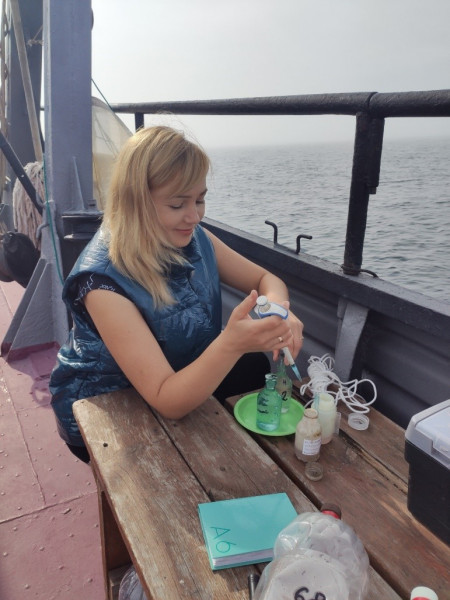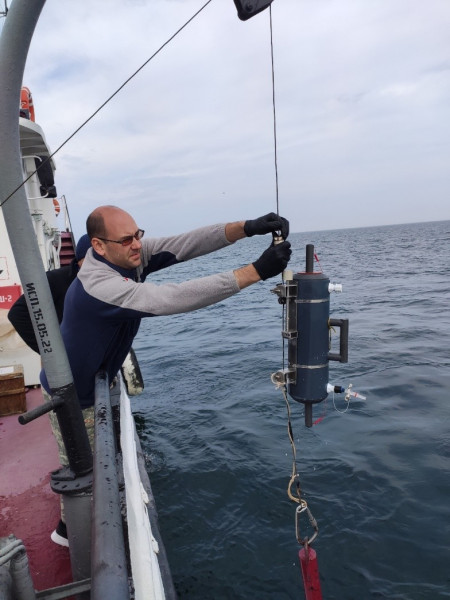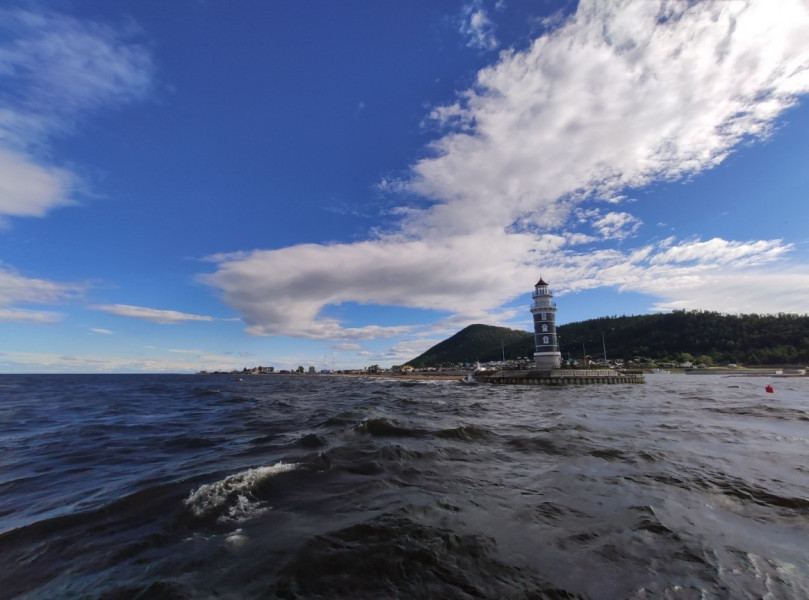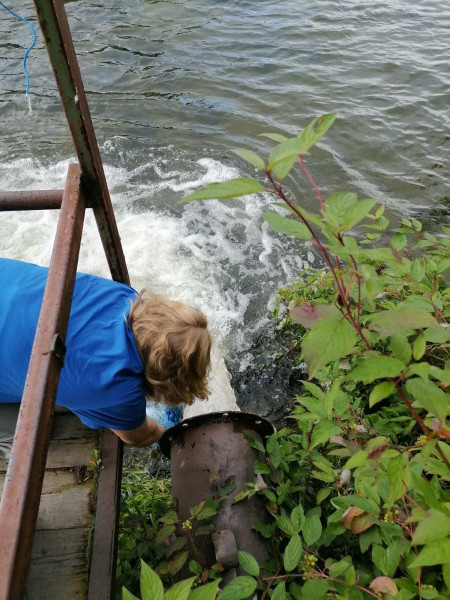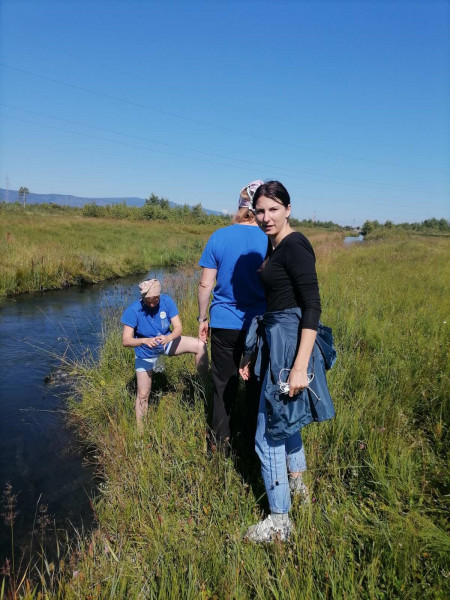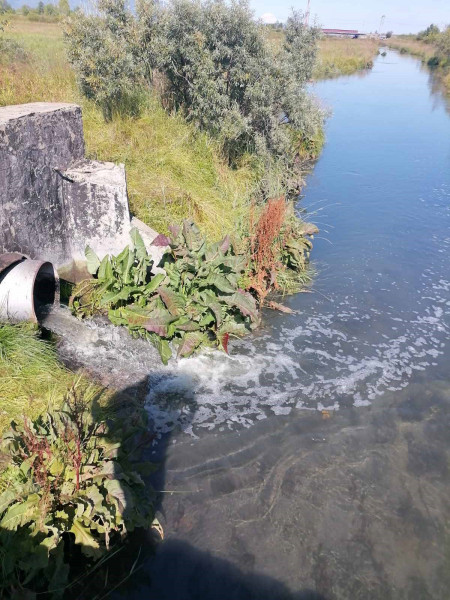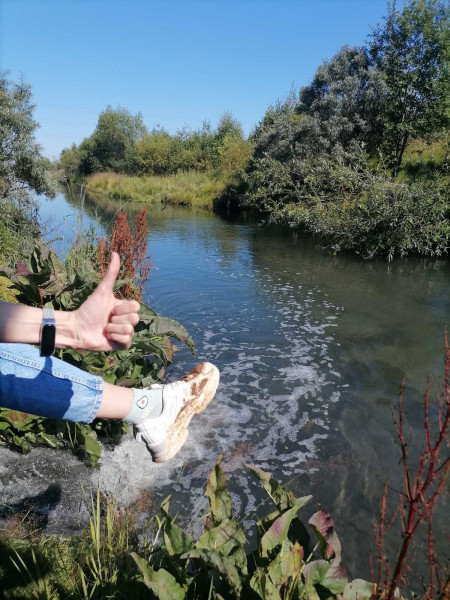Expedition on board the RV “Titov” from 29 July to 11 August, 2022
From 29 July to 11 August 2022, the expedition was carried out on the board the RV “Titov” within the programmes “Study of viral and bacterial communities as the basis for the stable functioning of freshwater ecosystems and an effective response in conditions of anthropogenic impact” (project № 0279-2021-0015) (led by O. Belykh) and “Assessment of environmental and economic aspects of the impact on Lake Baikal from existing and planned anthropogenic factors in the Baikal natural area, rational nature management, water and bio-resource potential of Lake Baikal” (project № 0279-2022-0004) (led by M. Makarov).
The fieldworks were conducted in the pelagic part of Lake Baikal at the central sites of the transects of Listvyanka–Tankhoy settlements, Cape Ukhan–Cape Tonky, Cape Elokhin – Cape Davsha, and in the littoral zone of Kultuk settlement, the towns of Slyudyanka, Baikalsk, Vydrino, the settlements of Tankhoy, Listvyanka, Bolshye Koty, Bolshoe Goloustnoye, Peschanaya Bay, Aya Bay, the bays of Maloye More, Chivyrkuisky and Barguzinsky Bays, Tyya River, Turka River, and in the areas of the discharges of WasteWater Treatment Plant of the towns of Severobaikalsk, Slyudyanka, Baikalsk.
The aim of the expedition is to obtain data on the quantitative distribution of sanitary-indicative microorganisms in the Lake Baikal ecosystem, to determine the genetic diversity, ecological characteristics of opportunistic pathogenic bacteria, to assess the degree of microbiological pollution of the coastal line as well as to identify autochthonic and allochthonic viruses as a new trophic link in the ecosystem of Lake Baikal.
The planned expeditionary works were carried out not in full due to the weather conditions. Study was conducted at 55 sites. There were taken 170 water samples for sanitary-microbiological study, 40 samples of phytoplankton and autotrophic picoplankton, 60 water samples for determination of the chlorophyll concentration, 40 samples for DNA extraction for testing the technique of detecting fecal pollution using marker probes to bacteria - inhabitants of human and animal intestines, 5 water samples for molecular-genetic studies of viral communities, 87 water samples for chemical analysis, 10 samples of the coastal line sand for sanitary-microbiological and chemical analysis.
Water quality was assessed at all sites for the main sanitary-microbiological parameters, and 25 of them were found to exceed the standards of SanPiN 1.2.3685-21 "Hygienic standards and requirements to ensure the safety and (or) innocuity of the habitat factors for humans ": Kultuk settlement, Baikalsk town, Baikalsk settlement, Listvyanka settlement, Bolshye Koty settlement, bays of Maloye More (Tutaysky, Zagli, Khul, Bazarnaya Bay, Mukhor Bay, Irkutskaya Bay, Khuzhirsky Bay), Chivyrkuisky Bay (Monakhovo, Kurbulik settlement, Zmeinaya Bay), Barguzin Bay (Maksimikha settlement), seven of ten rivers (Medlyanka, Pokhabikha, Pereyomnaya, Kuchelga, Turka, Barguzin, Tyya) and two investigated hydrotherms (Khakusy and Zmeinaya). Significant exceedances of sanitary-bacteriological indicators were detected in Bolshye Koty settlement (TCB - 1.8 times, E. coli - 9 times, enterococci - 35 times), Bazarnaya Bay (TCB – 4.5 times, enterococci – 7.8 times), and Khuzhirsky Bay (TCB - 4 times, enterococci - 2.6 times), Monokhovo (TCB – 6.5 times, enterococci – 12 times), Zmeinaya Bay (TCB – 2 times, enterococci – 44 times), and Kultuk (TCB – 3.2 times, enterococci – 5 times). The Pochabikha and Medlyanka rivers are characterized by the lowest quality of river water exceeding the values of TCB in 23 and 8.6 times, E. coli - in 104 and 4.6 times, enterococci - by 185 and 40 times, respectively.
According to the analysis results, the treated effluent of the WasteWater Treatment Plant of Severobaikalsk and Slyudyanka towns does not meet the requirements of SanPiN 1.2.3685-21. Severobaikalsk recorded an excess of 1.8 times in the standard of TCB number that indicate insufficient disinfection of wastewater. Slyudyanka town recorded the excess of all indicators of treated wastewater: TCB - 1600 times, E. coli - 800 times, enterococci - 80 times and coliphages - 162 times, which indicates, most likely, the absence of disinfection stages.
It was found that the ten study areas where the coastal soil samples were taken belonged to three degrees of epidemiological danger:
- • extremely dangerous in Slyudyanka town;
- • dangerous in Kultuk settlement, Aya Bay, Maloye More settlement, Kurbulik settlement, Zmeinaya Bay, and Maksimikha settlement;
- • moderately dangerous in Bolshye Koty settlement, Khuzhir settlement, Maksimikha settlement, and Baikalsk town.




